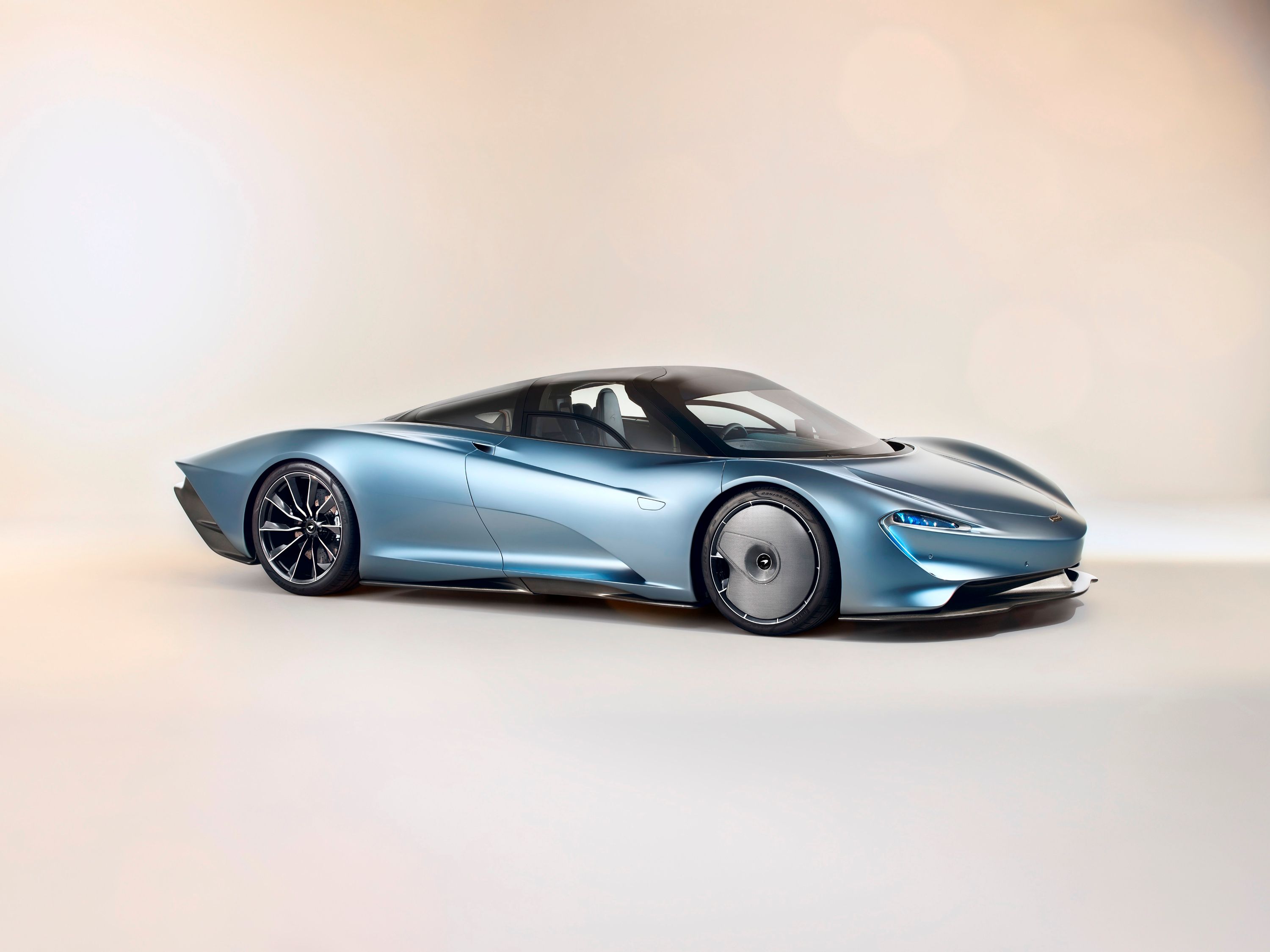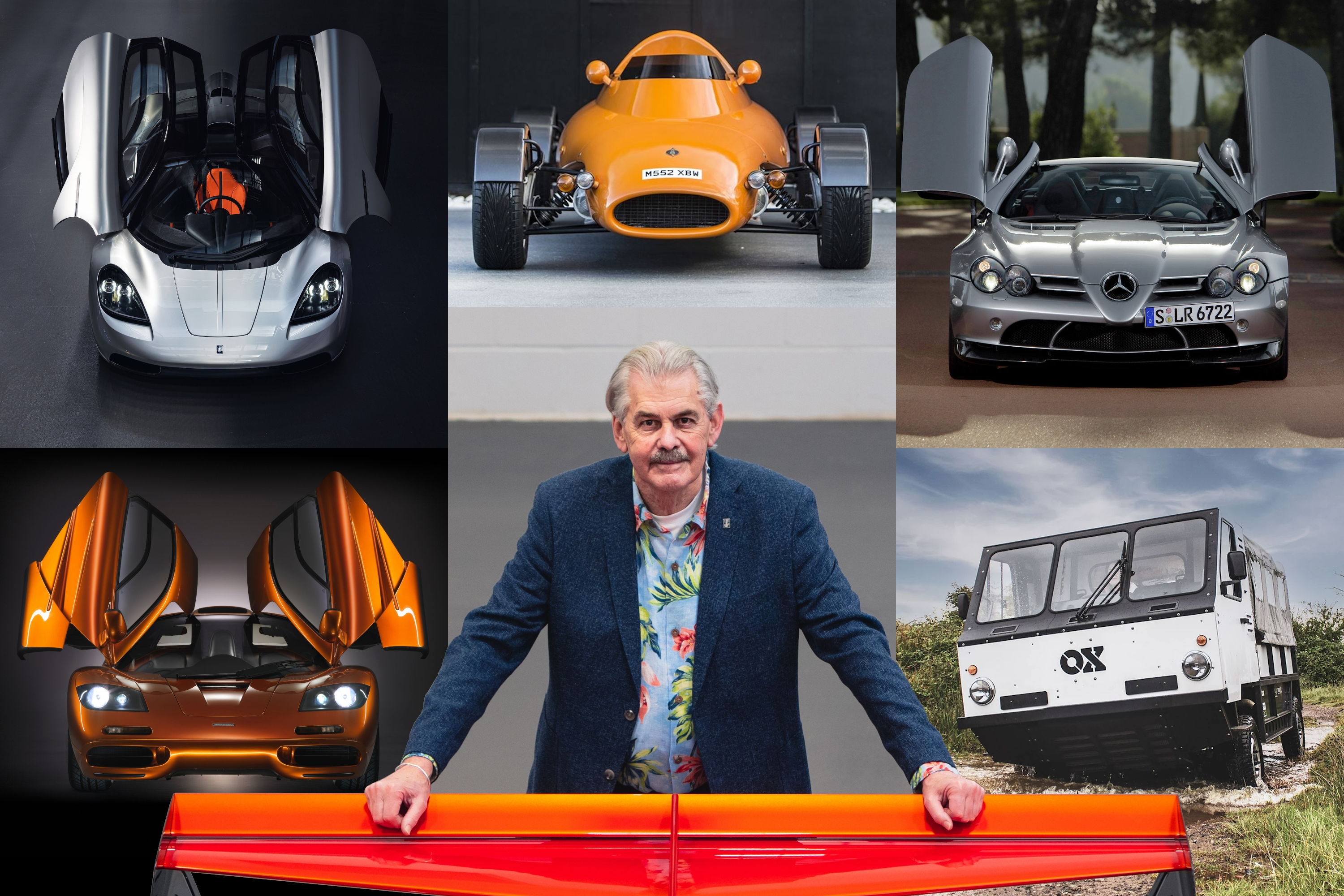
South African-born Gordon Murray is currently building some of the most exciting race and road cars in the automotive industry and is known for his imaginative approach to design. However, that inventive approach is always rooted in reality and careful engineering. That first showed itself when he was Chief Designer for the Brabham Formula 1 team in the 1970s. His innovative approach led to the incredible Brabham BT46 "fan car." The Brabham BT46 used a fan, claimed to be for increased cooling at the time, to create an exceptional amount of downforce. It entered one race, won, then was withdrawn from the rest of the racing season for political reasons. After Brabham, Murray moved to McLaren, where he was responsible for the legendary McLaren MP4/4 that won 15 of 16 races in a season, helping Ayrton Senna secure his first Drivers' Championship.
Murray had a long and successful career in Formula 1 but left the sport in 1991 to head McLaren Cars and a new challenge. There, he oversaw the brand's road-going supercars, including the McLaren F1. Ignoring the plethora of great race cars he designed, though, we're going to stick with Murray's road cars for this feature and start with something often forgotten.
Light Car Company Rocket
Before Murray dropped one of the greatest cars in automotive history on the world, he founded the Light Car Company with British race car driver Chris Craft. The company only made one car, and it was a gem. The Rocket weighs 838 pounds, less than a Caterham 7, and is powered by a 1.0-liter Yamaha motorbike engine making either 143 or 165 horsepower, hooked to a sequential transmission. It has two seats but no doors, and the passenger sits behind the driver. It's an engineer's dream of a track car but also road legal and with the power-to-weight ratio of a Bugatti Veyron. Only 55 were built between 1991 and 1998, when Murray was, obviously, focused on something else...
McLaren F1
At around the same time as the Rocket was built, Murray was pioneering the world's fastest car. The McLaren F1 was a sensational supercar powered by a BMW-supplied V12 making 618 hp, while the carbon fiber reinforced polymer (CFRP) chassis with its aluminum and magnesium attachment points was state of the art in 1992. It hit 240.1 mph to make it the world's fastest production car at the time. That record has been beat since, most notably by the Bugatti Veyron and Chiron, but the F1 still holds the record for a naturally aspirated car. Add its speed to the aerodynamic and suspension wizards informed by McLaren's racing chops, and there's an argument for the McLaren F1 being Murray's most significant achievement as it will go down as one of the greatest driving enthusiast cars of all time. As a race car, the McLaren F1 GTR won Le Mans on its first outing.
Mercedes-Benz SLR McLaren
The Mercedes-Benz SLR McLaren was conceived as a homage to the iconic 1955 Mercedes-Benz 300 SLR. It was built as a joint venture between Mercedes and McLaren. It was compromised in design to the point it wasn't a pure sports car or grand tourer, and that's where its beauty lays. It's powered by a hand-built and supercharged V8 making close to 620 hp and features more cutting edge and race car-informed tech like active aerodynamics and a CFRP chassis. In 2003 when it went into production, the SLR McLaren thrashed to 60 mph in 3.4 seconds, cornered like a race car, but dripped with style, had an automatic transmission, gullwing doors, a large trunk, and could be ordered as a convertible and later a limited-edition roofless speedster.
OX Truck
Murray isn't only about fast cars and showed this with his involvement in designing the OX Truck. A charity organization formed OX Delivers to provide affordable and reliable transport, particularly last-mile delivery vehicles in emerging markets. Murray created the first four prototypes of the, and this isn't an error, flatpack trucks. The OX truck is designed to use minimal parts, have a low cost for manufacturing, and be shipped flat-packed like Swedish furniture. Reportedly, Murray kept the first prototype, XP1, for his private collection.
Gordon Murray Automotive T.50
In 2017, Murray founded Gordon Murray Automotive and a design consultancy firm called Gordon Murray Design. The Design side of things was involved with the rebirth of TVR, but also a Smart-esque city car called the T.25 with an electric version called the T.27. But Gordon Murray Automotive was responsible for the T.50 - the real spiritual successor to the McLaren F1 (sorry, Speedtail.)
It's an insane piece of engineering and quite likely the thunderous finale for the enthusiast car as we know it now. The T.50 is powered by a naturally-aspirated Cosworth-built 3.9-liter V12 that revs out to 12,100 rpm, making 650 hp on the way. And, it's only fitted with a manual from the factory. In true Murray tradition, it's not just fast and loud. The engine weighs just 392 pounds, and the car 2,174 pounds in total. The math delivers a car with a power-to-weight ratio of 672 hp per ton and a specific output of 163.7 hp per liter.
That puts the T.50 in the same class as hypercars like the Aston Martin Valkyrie and the Mercedes-AMG One. Except it has a manual transmission. Following the T.50 will be the US road legal T.33 super-GT. If that wasn't enough insane cars for Murray to be involved with right now, he also has a hand in the next TVR Griffith due as a 2024 model.

